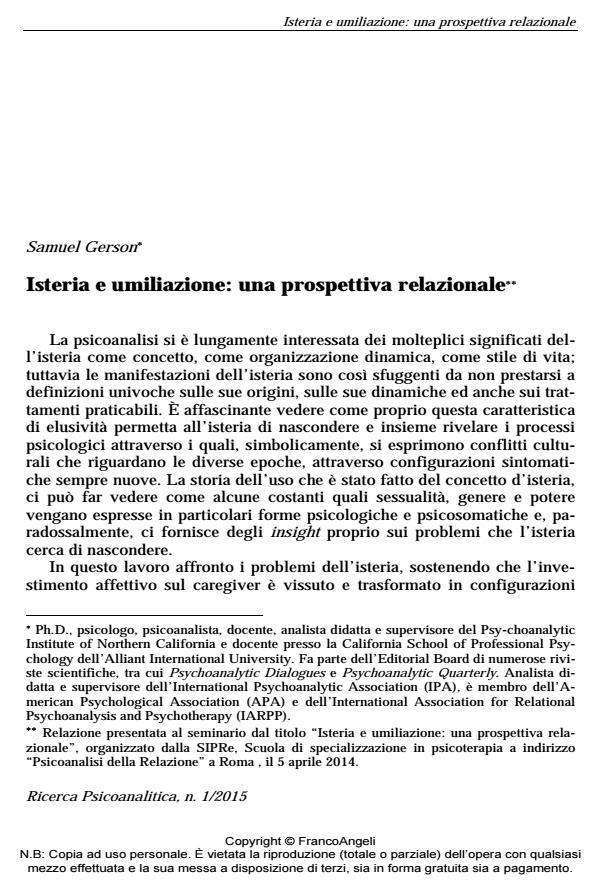Hysteria and humiliation: a relational view
Journal title RICERCA PSICOANALITICA
Author/s Samuel Gerson
Publishing Year 2015 Issue 2015/1
Language Italian Pages 20 P. 65-84 File size 80 KB
DOI 10.3280/RPR2015-001006
DOI is like a bar code for intellectual property: to have more infomation
click here
Below, you can see the article first page
If you want to buy this article in PDF format, you can do it, following the instructions to buy download credits

FrancoAngeli is member of Publishers International Linking Association, Inc (PILA), a not-for-profit association which run the CrossRef service enabling links to and from online scholarly content.
The use made of the concept of hysteria and of some constants such as sexuality, gender and power provide us with insights on the issues that hysteria tries to hide turning them into psychopathological and psychosomatic forms. In particular, the Author suggests that the issues related to hysteria represent the noxious effects of humiliation on the experience and articulation of affect life. According to the Author, hysteria is the outcome of humiliation that cannot be expressed. On the other hand, the association between hysteria and humiliation derives from the basic developmental processes when the capacity for acknowledging one’s feelings and acting them consciously is supported, encouraged or hampered.
Keywords: Hysteria, somatisation, sexuality, conversion, humiliation, affect life
Samuel Gerson, Isteria e umiliazione: una prospettiva relazionale in "RICERCA PSICOANALITICA" 1/2015, pp 65-84, DOI: 10.3280/RPR2015-001006